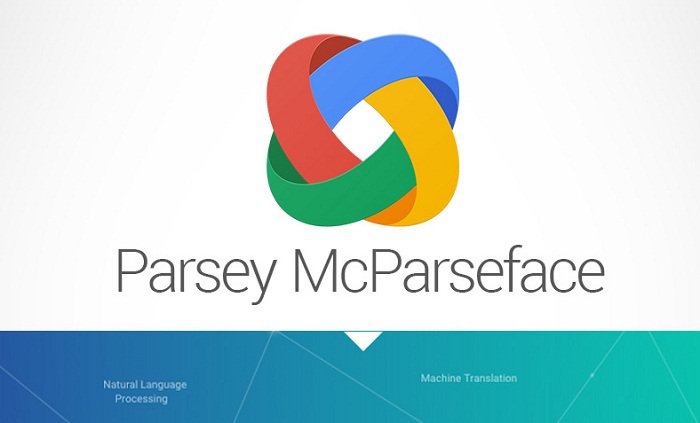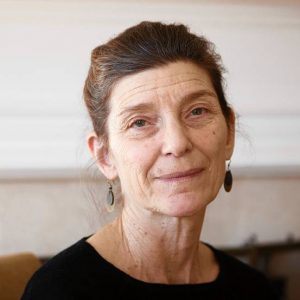All of this comes on top of Ms. Goldstein’s day job, as head of the copy department at the New Yorker magazine.
She became a translator by accident, though it was clear from childhood that she had a deep affinity for languages.
She grew up in Maplewood, N.J., and began studying French and Latin in grade school. At Bennington College in Vermont, she took up ancient Greek, wanting to read Homer and Aeschylus. In 1973, she took her first job as a proofreader for Esquire. She moved to the New Yorker the following year, and worked her way up through the copy department, becoming its chief in the late 1980s. She has edited writers including John Updike, Ian Frazier and Adam Gopnik.
At the magazine, she earned a reputation as a master of English grammar who helped writers polish their sentences until they shined.
“She’s like a diamond cutter,” said New Yorker editor David Remnick. “It’s just an accumulation of refinement after refinement… that makes you a better you.”
She didn’t begin studying Italian—or even visit Italy—until her late 30s. In 1986, she and some of her New Yorker colleagues invited an Italian instructor to teach a class once a week at their office. Ms. Goldstein had always wanted to read Dante in the original language. Together, over the next couple of years, she and her colleagues read the entire “Divina Commedia.”
She visited Italy for the first time in 1987. Smitten with the language and the country, she began reading in Italian as much as she could.
In 1992, New Yorker cartoonist Saul Steinberg asked editor Robert Gottlieb to consider a short book by his friend, Italian author Aldo Buzzi. Mr. Gottlieb couldn’t read Italian, so he asked Ms. Goldstein to have a look at it. She read it, liked it, and decided to try her hand at translating it.
“I liked it as a way of reading,” Ms. Goldstein recalled in an interview at a cafe near her office at One World Trade Center. “If you have to copy down every word of something, you become very close to it.”
Mr. Gottlieb liked the translation, and published it in the magazine.
Ms. Goldstein continued to translate both magazine pieces and books. And in 2004, she got a big break. A new publishing company called Europa Editions invited her to submit a sample translation for its first book: Ms. Ferrante’s “The Days of Abandonment.” Ms. Goldstein submitted a sample of the book’s searing opening. So did Michael Reynolds, then a freelance copy editor for Europa, living in Rome.
Among the applicants, Ms. Goldstein wasn’t the best-known translator, but the editors decided her sample was the best. She beat out Mr. Reynolds, who later became editor in chief of the company, and now serves as her editor.
There is a spectrum, among translators, ranging from those who hew very closely to the original to those who take more liberties with the text. Ms. Goldstein leans toward fidelity. Editors who have worked with her say her strength comes not just from her mastery of Italian, but from her profound love of English.
“Sometimes, I think, it’s puzzle-solving,” Ms. Goldstein said. “I want to make good English sentences but without losing the particular voice of the Italian writer. I can’t explain how that happens. I think it has to do with staying pretty close to the original.”
Italian sentences tend to be more complex than English sentences, often running on with clauses and sub-clauses. Because English grammar doesn’t have gendered nouns, these clauses have to be rearranged to make sense in English. Ms. Ferrante’s sentences tumble forward, comma after comma, with emotional intensity. Ms. Goldstein’s translation replicates that rhythm, and that emotion.
In a December interview via email with FT Magazine, Ms. Ferrante said of Ms. Goldstein: “I trust her completely.”
Ms. Goldstein says she doesn’t know Ms. Ferrante’s real identity. She has exchanged emails with her a couple of times, but usually sends questions or clarifications through the author’s Italian editors. Ms. Ferrante reads English and signs off on the final versions but generally doesn’t suggest revisions, Mr. Reynolds said.
Ms. Goldstein said she was floored—and intimidated—when she was invited to translate Ms. Lahiri’s memoir. In a preface to the book, to be released Feb. 9 from Alfred A. Knopf, the author explains that she decided not to translate her own work because she wanted to immerse herself fully in Italian, and would have felt the urge to smooth out the “rough edges” of her adopted language.
Ms. Goldstein was immediately drawn to the book, in which the author recounts how she learned Italian as an adult, moved with her family to Rome and decided to write only in Italian. (One of Ms. Goldstein’s greatest regrets is never having lived in Italy—at least not yet.)
“Of course, it was also incredibly stressful,” Ms. Goldstein said of translating Ms. Lahiri’s book. “She’s a writer in English. I felt very anxious about it.”
Ms. Lahiri’s Italian is fairly simple in the book’s early chapters. The translation reflects how her syntax and vocabulary become more complex as the author becomes more confident in Italian. In contrast to Ms. Ferrante, Ms. Lahiri was closely involved in the translation. Ms. Goldstein said the author submitted at least three rounds of revisions to the translation, one of them after Ms. Lahiri recorded the audiobook in both English and Italian. Ms. Goldstein said she deferred to the author: “She had some stuff she wanted to change, which was fine.”
The intensity of their collaboration was unusual for Ms. Goldstein, who usually works with authors who are dead or, in Ms. Ferrante’s case, not present. Ms. Lahiri declined to comment for this article. The two women seem to have emerged from the project with their relationship intact: They appeared together in November at the Center for Fiction in New York, where they discussed the Ferrante novels.
In addition to the Ferrante interview collection coming in November, Europa Editions this year will publish Ms. Goldstein’s translations of “The Young Bride” by Alessandro Baricco and “The Street Kids” by Pier Paolo Pasolini. World Editions is slated to publish her translation of Emanuele Trevi’s “Something Written.”
Ferrante Fever began in earnest in the U.S. with the 2014 release of the third novel in the Neapolitan series. Ms. Goldstein was suddenly in demand as a stand-in for the enigmatic author at live events. Shy by nature, she has warmed to her role as an ambassador not just for the mysterious Ms. Ferrante but for translation in general. Translators are rarely named in book reviews. Their names often are left off book jackets. Ms. Goldstein’s name, however, has become a valuable commodity. On its website, Europa Editions touts “The Street Kids” as “a new translation by Ann Goldstein, translator of Elena Ferrante’s Neapolitan Novels.”
“Her name on a book now is gold,” said Robert Weil, editor in chief of Liveright, who hired her for the Primo Levi project. Colleagues said Ms. Goldstein now stands among the ranks of great translators such as the late William Weaver, a doyen of Italian translation.
This spring, she has been invited to speak on a panel at the PEN World Voices Festival in New York and at writers’ festivals in Sydney and Auckland.
At the end of the night at BookCourt last September, the booksellers asked Ms. Goldstein to autograph their stock.
“I thought, ‘Who wants the translator’s signature?’” she said.



